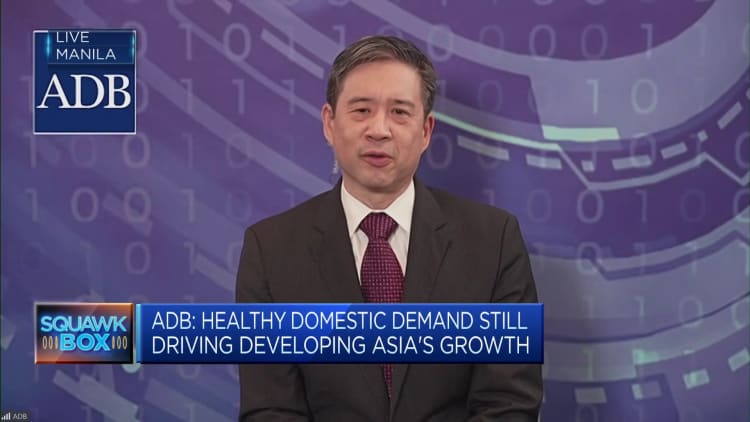
The Asian Development Bank trimmed its 2023 growth forecast for the region to 4.7% on the back of China’s embattled property sector and a persistently high interest rate environment.
This marks a slight downward revision from the bank’s previous projection of a 4.8% expansion.
“The PRC’s property market poses a downside risk and could hold back regional growth,” ADB said in its outlook report released Wednesday. China’s property sector has languished ever since Evergrande defaulted in 2021.
ADB also lowered its China growth forecast from 5% to 4.9%.
The report noted that a slowdown in global demand led to a decline in exports from the region’s economies for the first half of 2023.
“Slowing external demand is starting to weigh on manufacturing and a number of economies in the region, including China and Southeast Asia,” ADB’s chief economist Albert Park told CNBC’s “Squawk Box Asia.”
Park added that rising food prices as a result of El Niño has also factored into the downgrade. Rice, which is a key staple in the region, recently soared to 12-year highs.
“Although inflation is coming down, prices are still somewhat elevated and we’re seeing with high interest rates, cautious attitude by some investors in different parts of the region.”
Buildings in Kowloon, Hong Kong. (Photo by Michael Ho Wai Lee/SOPA Images/LightRocket via Getty Images)
Sopa Images | Lightrocket | Getty Images
In the report, ADB also attributed the revision to “slower expansions in East Asia, South Asia, and Southeast Asia.”
India also saw a downward revision in its growth forecast to 6.3% from 6.4%.
However, the report noted that South Asian expansion will still remain strong.
“South Asia will still be the fastest growing subregion, led by India and driven by strong investment and consumption,” the report said, highlighting that public investment in India had remained robust, and will continue to drive growth there.
Other bright spots?
That being said, ADB sees tailwinds in some economies.
The Caucasus and Central Asia region saw an upward revision from 4.4% to 4.6%, underpinned by “resilient windfall spillovers from the Russian invasion of Ukraine,” the report stated.
Growth has been stronger than expected in Uzbekistan, driven by rising food and textile exports to Russia, on top of investment.
“A lot of money and people continue to flow from Russia, into some of the neighboring economies,” said Park, who projects that these “unexpected benefits” from the war in Ukraine would continue. The region is closely linked with Russia through trade.
Similarly, the lender has also raised its forecast for the Pacific regions’ growth from 3.3% to 3.5%, boosted by a glowing tourism outlook.
“It’s the story of recovering tourism, and the implementation of some large infrastructure projects that are helping to boost growth.”
ADB forecasts inflation in developing Asia to decline to 3.6% this year, down from 4.4% last year.
Credit: Source link












